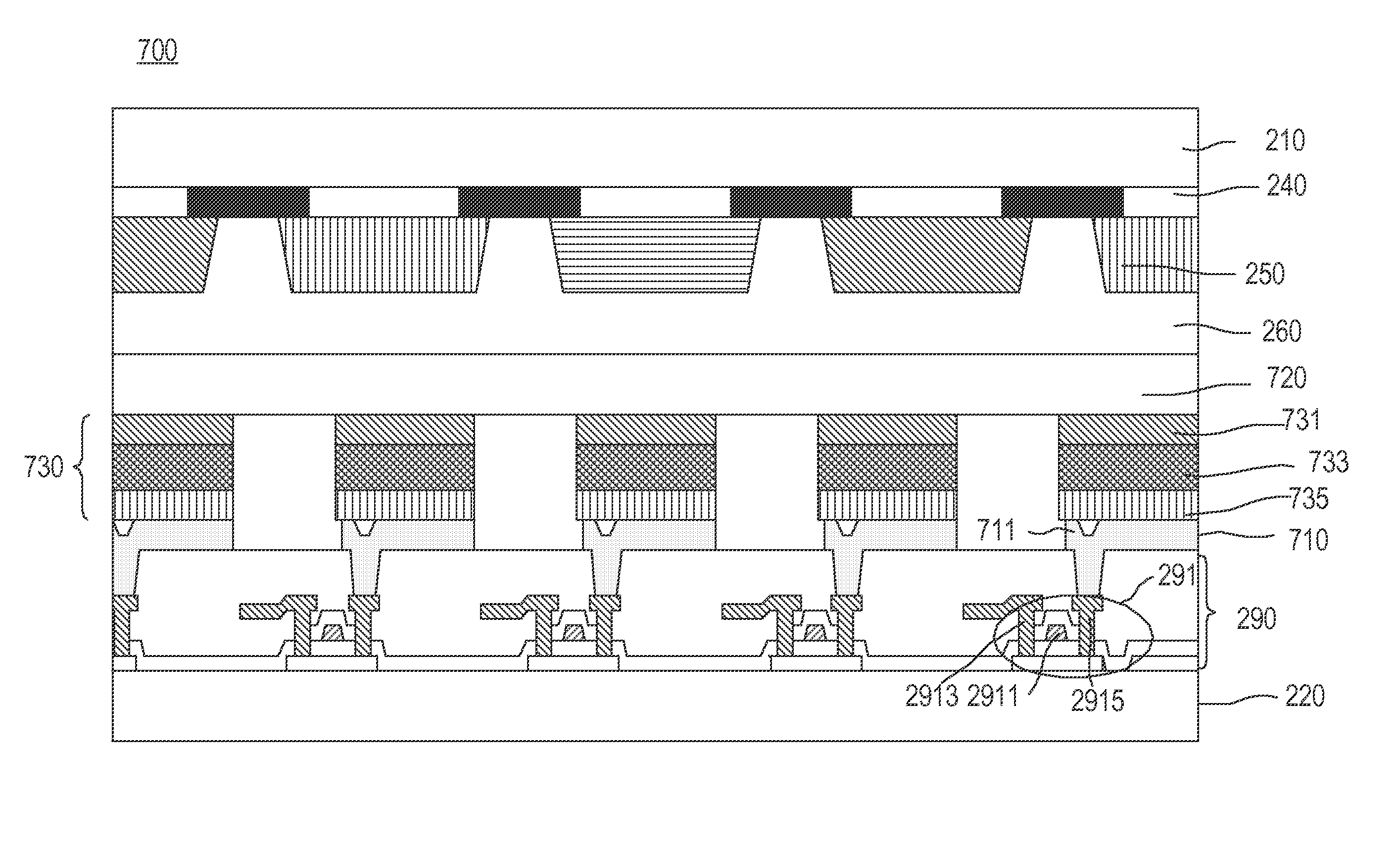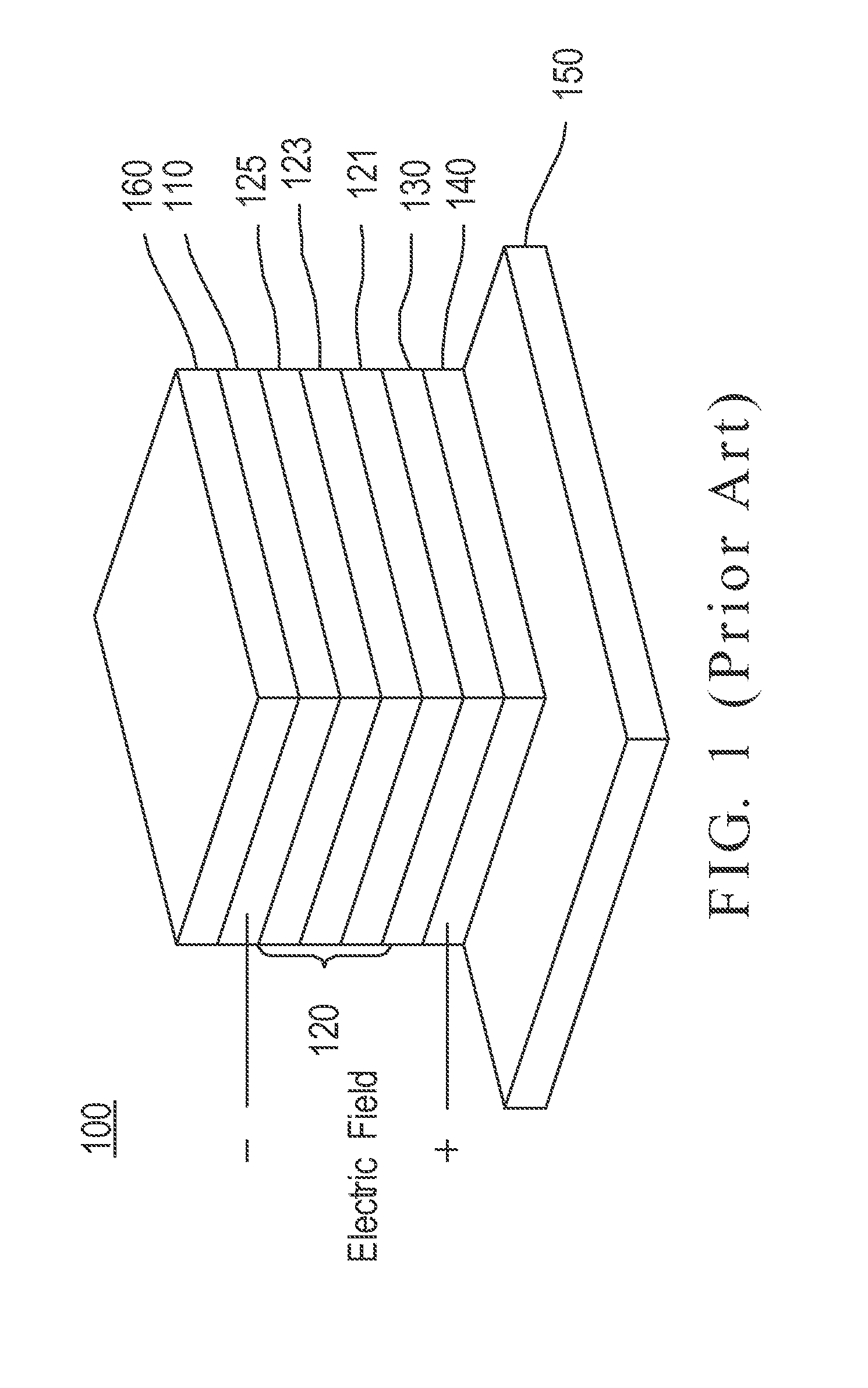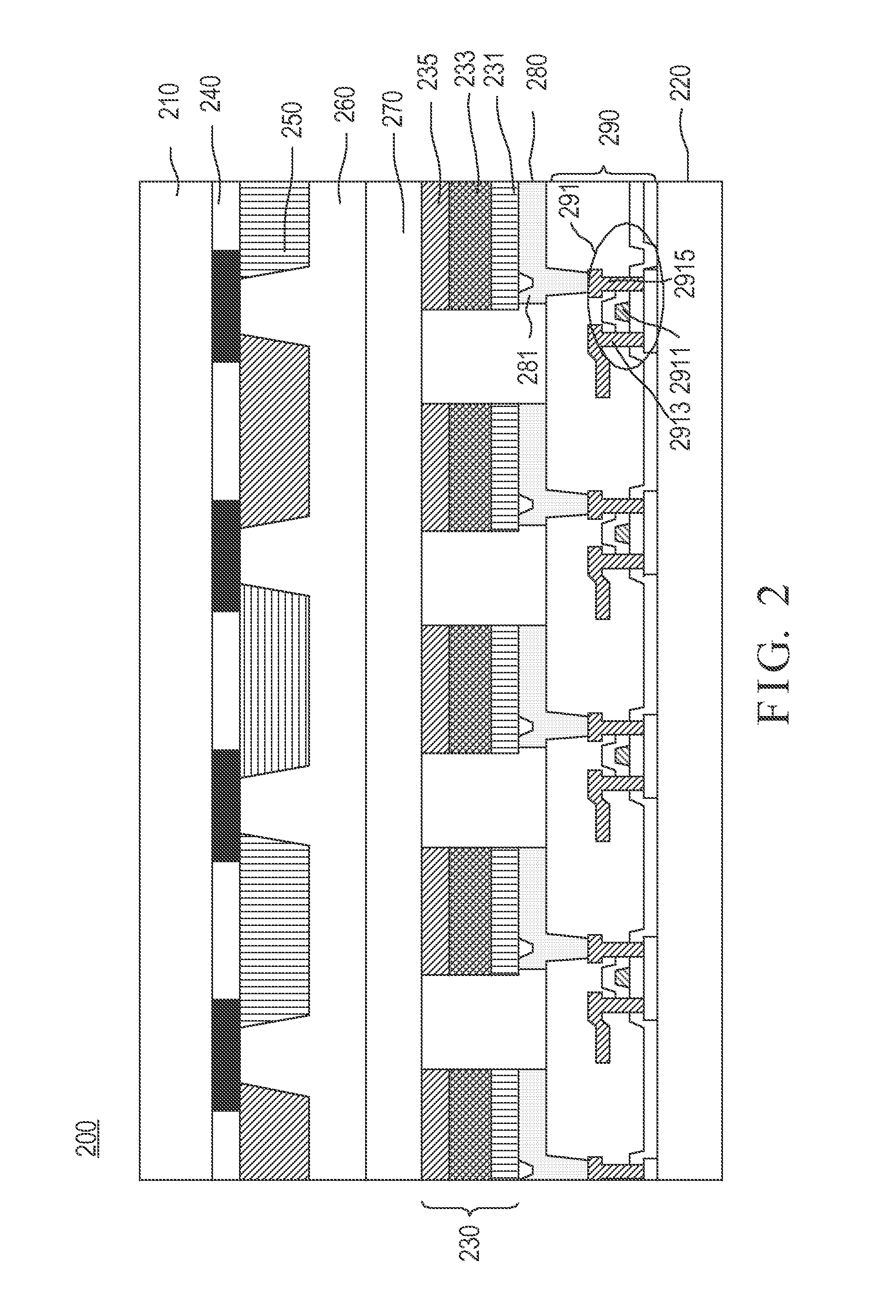In-cell OLED touch display panel structure
- Summary
- Abstract
- Description
- Claims
- Application Information
AI Technical Summary
Benefits of technology
Problems solved by technology
Method used
Image
Examples
Embodiment Construction
[0023]FIG. 2 is the stack-up diagram of an in-cell OLED touch display panel structure 200 in accordance with the present invention. As shown, the in-cell OLED touch display panel structure 200 includes an upper substrate 210, a lower substrate 220, an OLED layer 230, a black matrix layer 240, a color filter layer 250, an over coating layer 260, a cathode layer 270, an anode layer 280, and a thin film transistor (TFT) layer 290.
[0024]The upper substrate 210 and the lower substrate 220 are preferably glass substrates or plastic substrates, and are parallel to each other. The OLED layer 230 is disposed between the upper and lower substrates 210, 220.
[0025]The black matrix layer 240 is disposed at one surface of the upper substrate 210 that faces the OLED layer 230, and the black matrix layer 240 is composed of a plurality of opaque conductor lines.
[0026]FIG. 3 shows a prior black matrix layer. As shown in FIG. 3, the prior black matrix layer is composed of lines of insulating material ...
PUM
 Login to View More
Login to View More Abstract
Description
Claims
Application Information
 Login to View More
Login to View More - R&D
- Intellectual Property
- Life Sciences
- Materials
- Tech Scout
- Unparalleled Data Quality
- Higher Quality Content
- 60% Fewer Hallucinations
Browse by: Latest US Patents, China's latest patents, Technical Efficacy Thesaurus, Application Domain, Technology Topic, Popular Technical Reports.
© 2025 PatSnap. All rights reserved.Legal|Privacy policy|Modern Slavery Act Transparency Statement|Sitemap|About US| Contact US: help@patsnap.com



